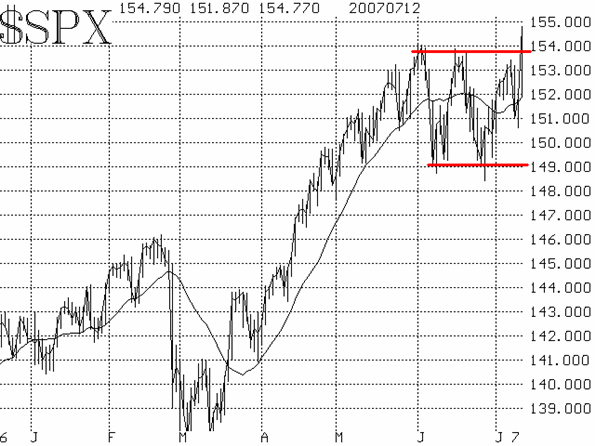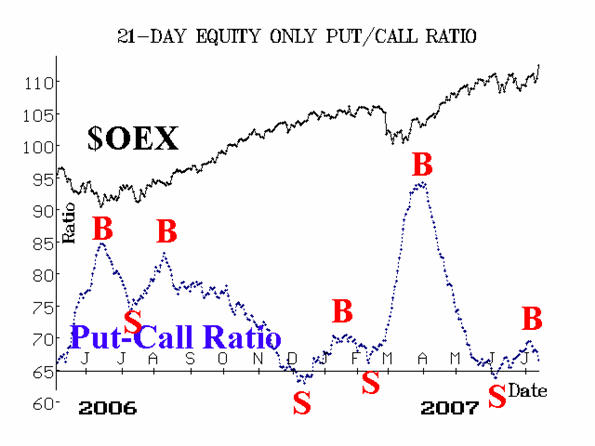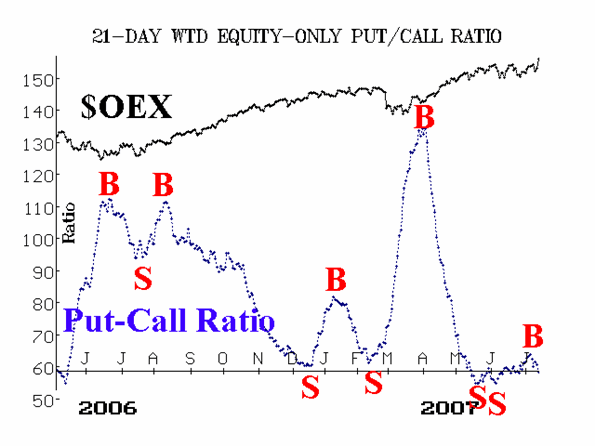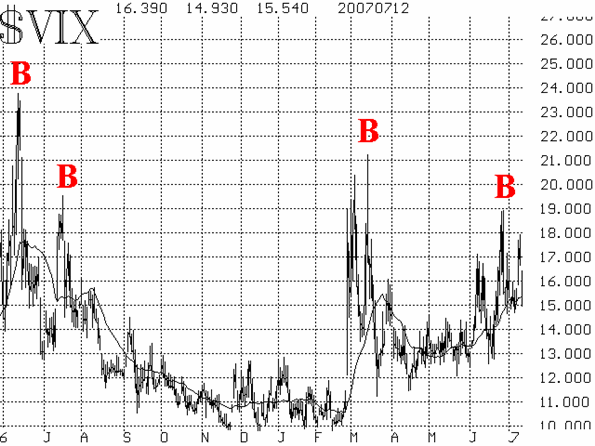| The McMillan Options Strategist Weekly |
| By Lawrence G. McMillan |
Published
07/13/2007
|
Options
|
Unrated
|
|
|
|
The McMillan Options Strategist Weekly
Wow! A bullish vortex of sorts formed and the storm swamped the market today (Thursday). The impetus behind the huge rally came from several sources: short covering, fundamentalists who decided that the retail sales report was evidence of continued consumer demand, and -- later in the day -- technical breakouts over several key levels. Some of the problems that the market had previously been facing still exist: a declining bond market (or rising rates), poor performance in the financial sector, and the continuing subprime problem. But those didn't seem to matter today.
$SPX had been bound by the 1490 - 1540 trading range. Today, it closed above there, at 1547.70, which is a new all-time closing high for $SPX. It still hasn't exceeded its all-time intraday high, at 1552, but that seems all but certain now. This upside breakout is quite bullish, as long as it holds. Sometimes trading range markets can be tricky, so any subsequent close below 1540 would be a big disappointment and would negate the potential bullishness of the breakout. On a more positive note, assuming that the breakout holds, it should generate a rally towards the 1600 level (basis $SPX) according to "standard" lore that a breakout from a trading range is usually equal to at least the size of the range itself (about 50 $SPX points in this case).

The equity-only put-call ratios had remained on sell signals, although they began to turn down (see Figures 2 & 3) a couple of days ago. A resumption of a downward trend in these ratios is a cancellation of the previous sell signals at a minimum, and can be considered a full-blown buy signal at best. As long as these ratios continue to decline, they will be considered bullish.

Market breadth continues to swing back and forth, following the market, rather than leading it. Data shows that there were 880 declining issues today, although I don't know how in the world there could have been that many.

Volatility indices continue to rise, in general. That is, the trend of $VIX is up (note the rising 20-day moving average on the graph, Figure 4). Even today, one would normally expect $VIX to drop much more than 1.10 if the Dow was up nearly 300 points, but it didn't. Of course, for some time, we have been expecting volatility to increase in general, and now it is. Perhaps it will increase during a rising market ala 1996-1999. But, in any case, increased volatility normally makes for interesting and tradeable markets for option traders.

In summary, it certainly appears that the trading range has been resolved in favor of an upside breakout. I would be more enthusiastic about this if a true washout had taken place, and if the breakout hadn't seem to come in such a panic fashion. But at this stage, it is a breakout, and by default the market is bullish as long as $SPX holds above 1540.
Lawrence G. McMillan is the author of two best selling books on options, including Options as a Strategic Investment, recognized as essential resources for any serious option trader's library.
|